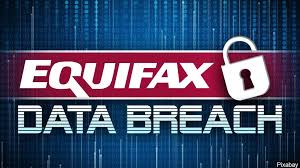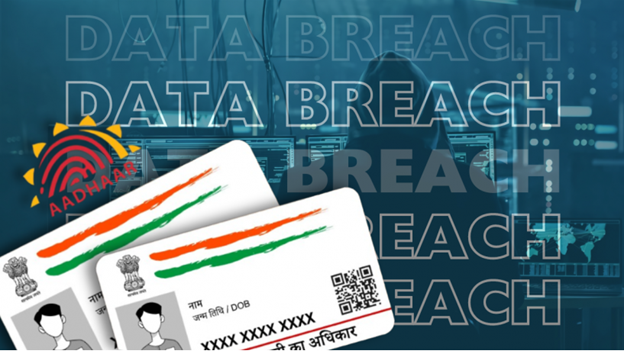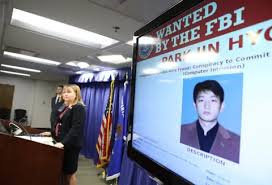Case Navigation
Real-World Cyber Crime Investigations
Examining landmark cases that shaped cybersecurity practices worldwide
Operation Innocent Images

Case Background
In May 1993, a missing child case in Maryland uncovered a disturbing pattern of online child exploitation that would lead to one of the FBI's most significant cyber investigations. What began as a local police matter revealed an extensive network of pedophiles using early internet technologies to share illegal content and groom victims.
The investigation exposed how offenders were leveraging private computer bulletin boards to distribute child sexual abuse material (CSAM) and communicate with like-minded individuals across state lines. This discovery prompted the FBI to launch Operation Innocent Images in September 1994, marking a new era in federal cybercrime enforcement.
Investigation Methodology
FBI agents employed innovative undercover techniques for the time:
- Created fake online personas to infiltrate pedophile networks
- Monitored private bulletin boards and chat rooms
- Developed digital forensic techniques to trace online activity
- Collaborated with international law enforcement agencies
Key Takeaways
- First major case demonstrating how criminals were adapting to new technologies
- Established precedent for federal jurisdiction in online crimes
- Led to creation of specialized cybercrime units in law enforcement
- Highlighted need for international cooperation in cyber investigations
Outcomes and Impact
The operation evolved into the Innocent Images National Initiative (IINI), which by 2007 had:
20,000+
Cases opened
6,800+
Convictions secured
The case fundamentally changed how law enforcement approaches online crimes against children and set the stage for modern cybercrime investigative techniques.
Corporate Credit Card Fraud at a BPO

Case Overview
A business process outsourcing (BPO) company specializing in credit card services discovered fraudulent activities where employees manipulated credit limits and transaction records, resulting in significant financial losses. The case highlighted vulnerabilities in financial outsourcing operations and internal controls.
Modus Operandi
The perpetrators exploited several system weaknesses:
- Password Exploitation: Obtained temporary credentials by deliberately locking accounts
- Transaction Reversal: Manually reversed legitimate card transactions
- Data Manipulation: Changed account addresses to prevent detection
- Collusion: Worked with external cardholders to share illicit gains
Investigation Process
Cyber crime investigators employed multiple forensic techniques:
Log Analysis
Correlated system logs with fraudulent transactions
Attendance Records
Matched employee login times with fraudulent activities
Digital Forensics
Recovered deleted files and transaction records
Merchant Verification
Confirmed fraudulent transactions with vendors
Security Lessons
- Need for robust access controls in financial BPOs
- Importance of separation of duties in transaction processing
- Value of comprehensive activity logging and monitoring
- Regular security audits of privileged accounts
Case Resolution
The investigation led to:
- Arrest of all involved employees and external collaborators
- Recovery of stolen assets
- Implementation of enhanced security measures at the BPO
- Recognition as 2nd runner-up in India Cyber Cop Award
This case became a benchmark for investigating internal financial fraud in outsourcing environments.
WannaCry Ransomware Attack

Case Background
In May 2017, the WannaCry ransomware attack spread rapidly across the globe, infecting over 200,000 computers in more than 150 countries. The ransomware encrypted data on infected systems, demanding Bitcoin payments for decryption keys. Notable victims included the UK's National Health Service (NHS), FedEx, and Honda.
Attack Methodology
The attackers exploited a vulnerability in Microsoft Windows, known as EternalBlue, which had been previously leaked by the Shadow Brokers hacking group. The ransomware propagated as a worm, requiring no user interaction to spread within networks.
Key Takeaways
- Highlighted the importance of timely software patching and updates.
- Demonstrated the potential for ransomware to cause widespread disruption.
- Emphasized the need for robust backup and disaster recovery plans.
Outcomes and Impact
The attack caused billions of dollars in damages worldwide. It prompted organizations to reevaluate their cybersecurity practices and led to increased awareness about the dangers of ransomware.
Stuxnet Worm

Case Background
Stuxnet was a highly sophisticated computer worm discovered in 2010. It specifically targeted supervisory control and data acquisition (SCADA) systems used in Iran's nuclear facilities, particularly affecting centrifuges used for uranium enrichment.
Attack Methodology
Stuxnet exploited multiple zero-day vulnerabilities and used stolen digital certificates to appear legitimate. Once inside a system, it altered the operation of industrial machinery while displaying normal operation signals to monitoring systems.
Key Takeaways
- Marked one of the first known uses of cyber warfare to cause physical damage.
- Showcased the potential for cyber attacks to target critical infrastructure.
- Highlighted the need for robust security in industrial control systems.
Outcomes and Impact
Stuxnet is believed to have caused significant delays in Iran's nuclear program. Its discovery led to increased focus on cybersecurity in industrial environments and raised concerns about the weaponization of cyber tools.
Yahoo Data Breach

Case Background
Between 2013 and 2014, Yahoo experienced two massive data breaches compromising all 3 billion user accounts. The breaches exposed names, email addresses, phone numbers, dates of birth, and hashed passwords.
Attack Methodology
Attackers exploited vulnerabilities to gain unauthorized access to Yahoo's user database, extracting sensitive information over an extended period.
Key Takeaways
- Emphasized the necessity for robust encryption and security protocols.
- Highlighted the importance of timely breach disclosure to users.
- Led to increased scrutiny of corporate cybersecurity practices.
Outcomes and Impact
Yahoo faced significant reputational damage and legal consequences, including a $117.5 million settlement for affected users. The incident underscored the critical need for stringent data protection measures.
Target Corporation Data Breach

Case Background
In 2013, Target Corporation suffered a data breach where hackers stole credit and debit card information of approximately 40 million customers during the holiday shopping season.
Attack Methodology
Attackers gained access through network credentials stolen from a third-party vendor, exploiting weak access controls to install malware on Target's point-of-sale systems.
Key Takeaways
- Highlighted vulnerabilities associated with third-party vendors.
- Emphasized the need for robust network segmentation and monitoring.
- Led to widespread adoption of EMV chip technology in the U.S.
Outcomes and Impact
Target faced significant financial losses, including a $18.5 million multistate settlement. The breach prompted retailers to enhance cybersecurity measures and adopt more secure payment technologies.
Equifax Data Breach

Case Background
In 2017, Equifax, one of the largest credit reporting agencies, announced a data breach exposing personal information of approximately 147 million individuals, including Social Security numbers and driver's license details.
Attack Methodology
Attackers exploited a vulnerability in Apache Struts, a web application framework, which Equifax had failed to patch, allowing unauthorized access to sensitive data.
Key Takeaways
- Underlined the critical importance of timely software patching.
- Demonstrated the severe consequences of inadequate cybersecurity practices.
- Led to increased regulatory focus on data protection and breach notification.
Outcomes and Impact
Equifax agreed to a settlement of up to $700 million to compensate affected consumers and improve security measures. The breach served as a wake-up call for organizations to prioritize cybersecurity.
ATM Malware Attack on Cosmos Bank

Case Overview
In 2018, hackers launched a sophisticated malware attack on Cosmos Bank's ATM switch server, allowing unauthorized withdrawals from over 28 countries. This was one of the largest cyber heists in Indian banking history.
Modus Operandi
- Server Breach: Hackers compromised the bank's ATM switch server.
- Malware Injection: Installed malware to approve fake transactions.
- Fake Card Cloning: Used cloned debit cards globally.
- Multiple Withdrawals: Coordinated cash-outs through global mule networks.
Investigation Process
Malware Forensics
Analyzed the malicious code on ATM servers
SWIFT Audit
Checked interbank messaging for unauthorized transfers
Transaction Tracing
Mapped withdrawal patterns across countries
Network Traffic Monitoring
Detected unusual communication with external IPs
Security Lessons
- Segmentation of critical systems
- Real-time fraud monitoring
- Regular malware and vulnerability scans
- Global coordination for ATM networks
Case Resolution
- Case handed over to INTERPOL for global leads
- Cyber insurance covered partial losses
- Bank upgraded core banking systems
- Creation of guidelines for secure ATM operations
This case is cited in cybersecurity forums for ATM malware defense strategies.
UIDAI Aadhaar Data Leak

Case Overview
In 2018, it was reported that Aadhaar data including names, addresses, and Aadhaar numbers of over 1 billion Indians was allegedly accessible online for a fee. This raised significant privacy and national security concerns.
Modus Operandi
- Unauthorized API Access: Exploited loopholes in Aadhaar verification APIs
- Credential Sharing: Used leaked admin credentials of enrollment agents
- Data Dump Sales: Offered access via WhatsApp for ₹500
- No Encryption: Sensitive data was stored in plaintext
Investigation Process
Access Logs Analysis
Tracked unauthorized access attempts
API Exploit Testing
Identified vulnerable endpoints
Audit of Registrars
Reviewed practices of Aadhaar enrollment centers
Undercover Reporting
Media sting revealed data sellers on WhatsApp
Security Lessons
- Need for encryption of PII (Personally Identifiable Information)
- Strict access control on sensitive APIs
- Regular audits of government IT infrastructure
- Accountability for third-party data handlers
Case Resolution
- Government denied large-scale breach but initiated audits
- UIDAI disabled exposed APIs and added security layers
- Debate led to strengthening India's data privacy law
- Public awareness increased about digital identity safety
This case triggered national discussions on digital identity security and privacy frameworks.
Sony Pictures Hack by Lazarus Group

Case Overview
In 2014, North Korean state-sponsored hackers known as the Lazarus Group breached Sony Pictures, leaking sensitive emails, unreleased films, and employee data. The attack was allegedly retaliation for a film mocking North Korea's leader.
Modus Operandi
- Spear Phishing: Targeted executives via fake emails
- Malware Deployment: Used "Wiper" malware to destroy systems
- Data Exfiltration: Leaked TBs of sensitive documents
- Extortion: Demanded withdrawal of the film "The Interview"
Investigation Process
IP Attribution
Linked traffic to known North Korean addresses
Malware Signature Analysis
Matched with previous Lazarus attacks
Email Header Tracing
Identified spoofed sources and time patterns
Government Collaboration
US-CERT and FBI collaborated on threat attribution
Security Lessons
- Need for phishing awareness and training
- Importance of offsite backups and disaster recovery
- Criticality of zero-trust network models
- Role of geopolitical risks in cybersecurity
Case Resolution
- FBI officially blamed North Korea
- Sony rebuilt IT infrastructure from scratch
- US imposed sanctions on Lazarus Group
- Industry-wide alerts and protections increased
This case is a turning point in understanding cyber warfare and nation-state threats.
Sexual Harassment Case at an IT Firm
Case Overview
An employee at a reputed IT firm reported repeated inappropriate behavior and comments from a senior manager. Despite initial reluctance, the victim formally complained to the Internal Complaints Committee (ICC), triggering an internal investigation under the Sexual Harassment of Women at Workplace (Prevention, Prohibition and Redressal) Act, 2013.
Modus Operandi
The accused used his position of authority to harass the victim in the following ways:
- Inappropriate Comments: Passed personal and suggestive remarks during work discussions
- Unwanted Touch: Made physical contact under the pretext of friendliness
- Power Dynamics: Threatened poor performance reviews to suppress complaints
- Persistent Messaging: Sent messages outside work hours with inappropriate tone
Investigation Process
The Internal Complaints Committee followed due process and ensured confidentiality:
Victim Testimony
Detailed interviews were conducted in a safe and private setting
Digital Evidence
WhatsApp chats, emails, and messages were submitted and verified
Witness Statements
Colleagues testified about the accused’s behavior pattern
Policy Review
HR ensured actions aligned with the POSH Act and company policy
Security Lessons
- Every workplace must conduct regular POSH training
- Strong and independent ICC is crucial for fair investigation
- Encouraging a speak-up culture helps early intervention
- Clear reporting mechanisms must be available to all employees
Case Resolution
The investigation concluded with the following actions:
- Termination of the accused based on ICC’s recommendations
- Formal apology and counseling support for the victim
- Company-wide sensitization workshops introduced
- Recognized as a model case for timely and fair action under POSH
This case set a precedent for handling sexual harassment complaints with professionalism, empathy, and strict legal compliance in the Indian IT sector.